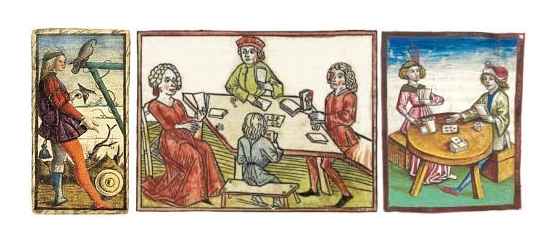Because we are all familiar with the modern deck of playing cards, a standard deck of Bicycle rider back playing cards seems very “normal” and “traditional” to most of us. But to people of the past, a deck like this is anything but normal! The reality is that playing cards have undergone a radical transformation since their first beginnings several centuries ago. Our modern playing cards evolved into a deck of 52 cards with four suits in red and black and with two Jokers by making a journey that took hundreds of years and involved travelling through many countries. In fact, the most significant elements that shaped today’s deck were produced by the different cultures and countries that playing cards travelled through in order to get to the present day.
In this article, we will survey the history of playing cards, emphasizing in particular the geographic influences that have determined what modern playing cards look like today. Our whirlwind historical tour will begin in the East, under a cloud of uncertainty about the precise origin of playing cards. But from there we will make our way to Europe, first to Italy and Spain, then east to Germany, back west to France, and across the channel to England. Finally we will travel over the ocean to the United States, which is where most of our decks are produced today by USPCC in the form that we now know them.
